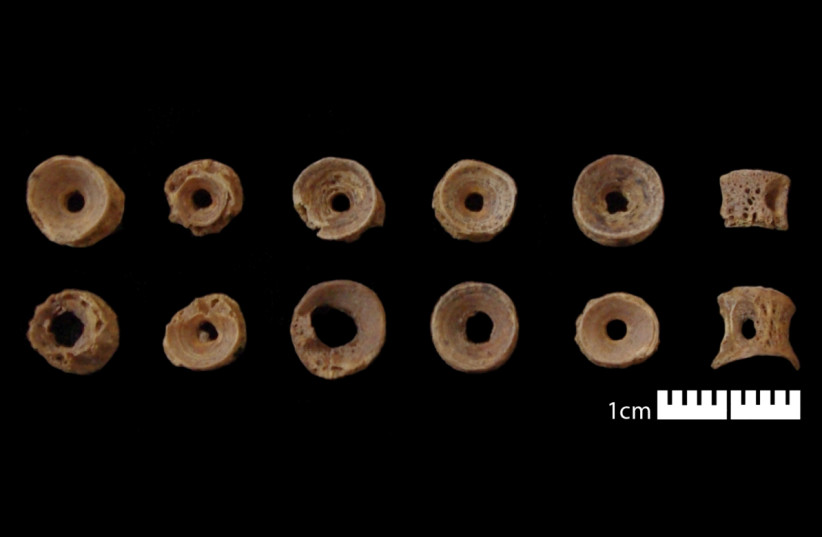Four out of Jesus’s 12 disciples in the New Testament were fishermen. In fact, much of his early preaching took place around the Sea of Galilee – including the miracle attributed to him of feeding masses with a few loaves of bread and fish. It is near these waters that in Matthew 4:19, he tells Peter and Andrew that he will make them into “fishers of men.”
Given all of that, the imagery of fish and fishing played an important role in early Christianity. The Greek ichthys – a symbol consisting of two intersecting arcs made to look like a fish – secretly held the Greek letters whose acronym stood for “Jesus Christ, Son of God, Savior.” The ichthys was used as a clandestine symbol for early Christians facing persecution from the Roman empire in the second century CE.
Now, British archaeologists from Durham University and DigVentures (an archaeology social enterprise in which volunteers work alongside professionals in crowd-funded and crowdsourced archaeological excavation projects) say they have uncovered the earliest known example of medieval prayer beads made of fish bones in Britain during excavations on the island of Lindisfarne.
The beads, which archaeologists dated to the eighth to ninth century CE, are made from salmon vertebrae, and they were found clustered around the neck of a skeleton buried at a cemetery at the site, according to a DigVentures press statement.
Lindisfarne, also known as Holy Island, is one of Britain’s most historic ancient sites just off the coast of Northumberland in Northern England. Its famous monastery was established by the Kings of Northumbria in the seventh century as an important religious center. The monastery became the scene of the first major Viking raid on Britain in 793 AD.

Other finds associated with the early monastery include medieval gaming pieces, coins, carvings and several early medieval burials.
Monks of the monastery created the Lindisfarne Gospels, an illuminated manuscript that is considered to be the most spectacular manuscript to survive from Anglo-Saxon England.
Archaeologists led by project co-director Dr. David Petts, a Durham University specialist in early Christianity, believe the fish vertebrae were prayer beads for personal devotion and were placed around the neck of a monk buried at the monastery cemetery.
“We think of the grand ceremonial side of early medieval life in the monasteries and great works like the Lindisfarne Gospels,” he said in the press statement. “But what we’ve got here is something which talks to a much more personal side of early Christianity.”
Similar beads dating from the 13th or 14th century have been found by archaeologists at a burial site at a nearby medieval chapel in Chevington, which is also in Northumberland. The beads were made of fish bones from a mix of Atlantic cod and other fish.
“We also have the stories of Christ and the apostles being fishermen and going on the Sea of Galilee and calming storms. We see in Bede’s Life of St. Cuthbert, Cuthbert calming storms. So the sea is symbolically important,” Petts said in the statement referring to the medieval saint from Northern England who joined the Lindisfarne monastery in the 670s.
The significance of the excavated fish bones was first recognized by zooarchaeologist Marina Chorro Giner, who noticed that they had been modified and identified them as beads.
Archaeologists said that the beads offered a glimpse into how people expressed their beliefs through objects and that their positioning around the neck indicated that they had been strung like a necklace.
The naturally occurring holes in the middle of the vertebrae have been widened, they noted.
“Clearly it was important enough that this person was buried with it,” said Lisa Westcott Wilkins of DigVentures in the press release. “As far as we’re aware, it’s the first example of prayer beads found anywhere in medieval Britain. We believe these beads were used as a personal object of faith, especially given that our modern word bead comes from the Old English gebed, meaning ‘prayer.’”
While prayer beads have never been used in Judaism, they have been associated with other religions in addition to Christianity, including Islam, Hinduism and Buddhism. The earliest image of a string of beads believed to be in a religious context dates to the 17th century BC on frescos found on the Greek island of Santorini, which were thought to have been part of the ancient Minoan culture.
